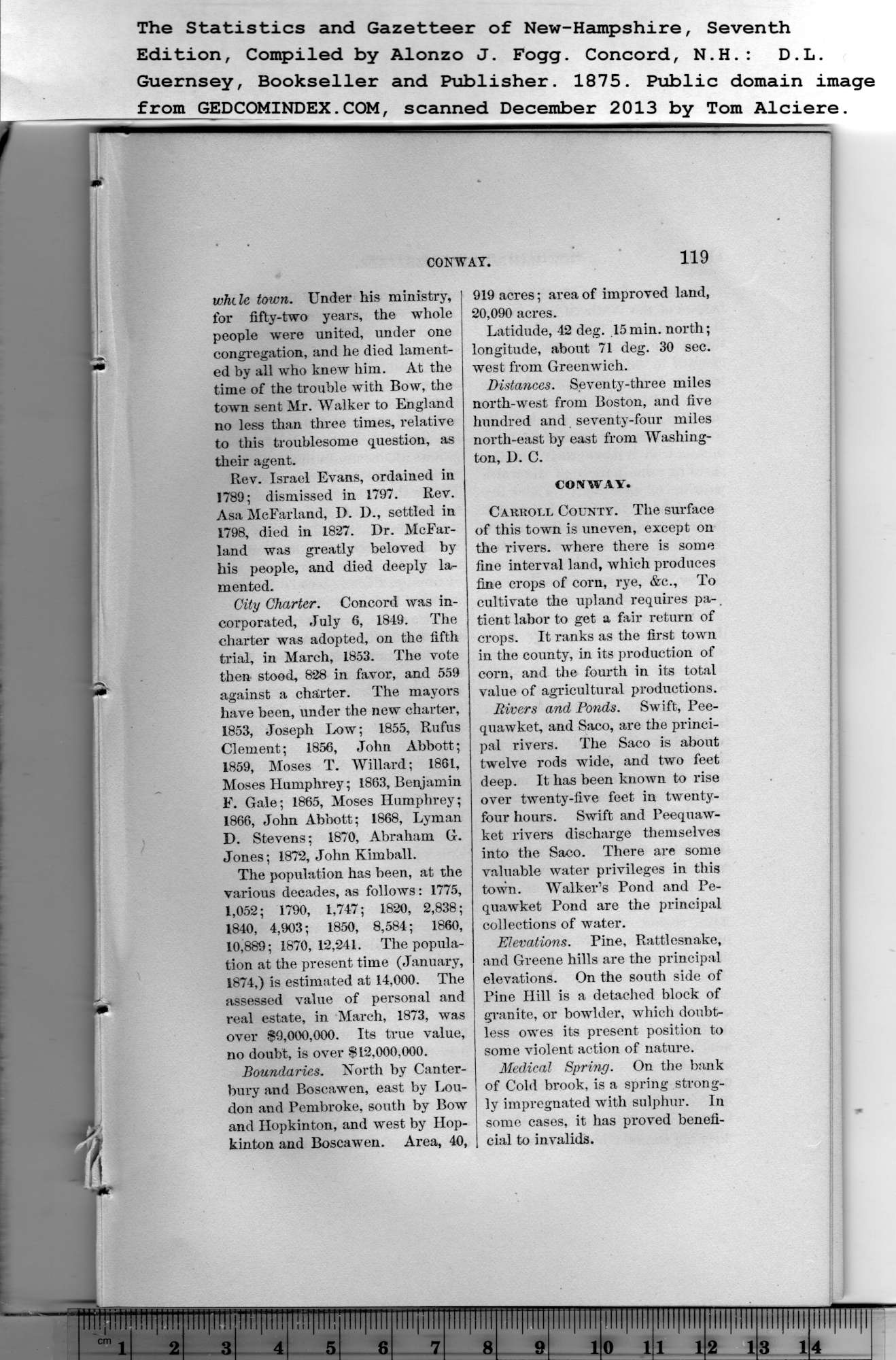|
while town. Under his ministry,
for fifty-two years, the whole
people were united, under one
congregation, and he died lament-
ed by all who knew him. At the
time of the trouble with Bow, the
town sent Mr. Walker to England
no less than three times, relative
to this troublesome question, as
their agent.
Itev. Israel Evans, ordained in
1789; dismissed in 1797. Rev.
Asa McFarland, D. D., settled in
1798, died in 1827. Dr. McFar-
land was greatly beloved by
his people, and died deeply la-
mented.
City Charter. Concord was in-
corporated, July 6, 1849. The
charter was adopted, on the fifth
trial, in March, 1853. The vote
then stood, 828 in favor, and 559
against a charter. The mayors
have been, under the new charter,
1853, Joseph Low; 1855, Rufus
Clement; 1856, John Abbott;
1859, Moses T. Willard; 1861,
Moses Humphrey; 1863, Benjamin
F. Gale; 1865, Moses Humphrey;
1866, John Abbott; 1868, Lyman
D. Stevens; 1870, Abraham G.
Jones; 1872, John Kimball.
The population has been, at the
various decades, as follows: 1775,
1,052; 1790, 1,747; 1820, 2,838;
1840, 4,903; 1850, 8,584; 1860,
10,889; 1870,12,241. The popula-
tion at the present time (January,
1874,) is estimated at 14,000. The
assessed value of personal and
real estate, in March, 1873, was
over $9,000,000. Its true value,
no doubt, is over $12,000,000.
Boundaries. North by Canter-
bury and Boscawen, east by Lou-
don and Pembroke, south by Bow
and Hopkinton, and west by Hop-
kinton and Boscawen. Area, 40,
919 acres; area of improved land,
20,090 acres. |
Latidude, 42 deg. 15min. north;
longitude, about 71 deg. 30 sec.
west from Greenwich.
Distances. Seventy-three miles
north-west from Boston, and five
hundred and seventy-four miles
north-east by east from Washing-
ton, D. C.
CONWAY.
Carroll County. The surface
of this town is uneven, except on
the rivers, where there is some
fine interval land, which produces
fine crops of corn, rye, &c., To
cultivate the upland requires pa-,
tient labor to get a fair return of
crops. It ranks as the first town
in the county, in its production of
corn, and the fourth in its total
value of agricultural productions.
Rivers and Ponds. Swift, Pee-
quawket, and Saco, are the princi-
pal rivers. The Saco is about
twelve rods wide, and two feet
deep. It has been known to rise
over twenty-five feet in twenty-
four hours. Swift and Peequaw-
ket rivers discharge themselves
into the Saco. There are some
valuable water privileges in this
town. Walker’s Pond and Pe-
quawket Pond are the principal
collections of water.
Elevations. Pine, Rattlesnake,
and Greene hills are the principal
elevations. On the south side of
Pine Hill is a detached block of
granite, or bowlder, which doubt-
less owes its present position to
some violent action of nature.
Medical Spring. On the bank
of Cold brook, is a spring strong-
ly impregnated with sulphur. In
some cases, it has proved benefi-
cial to invalids. |
